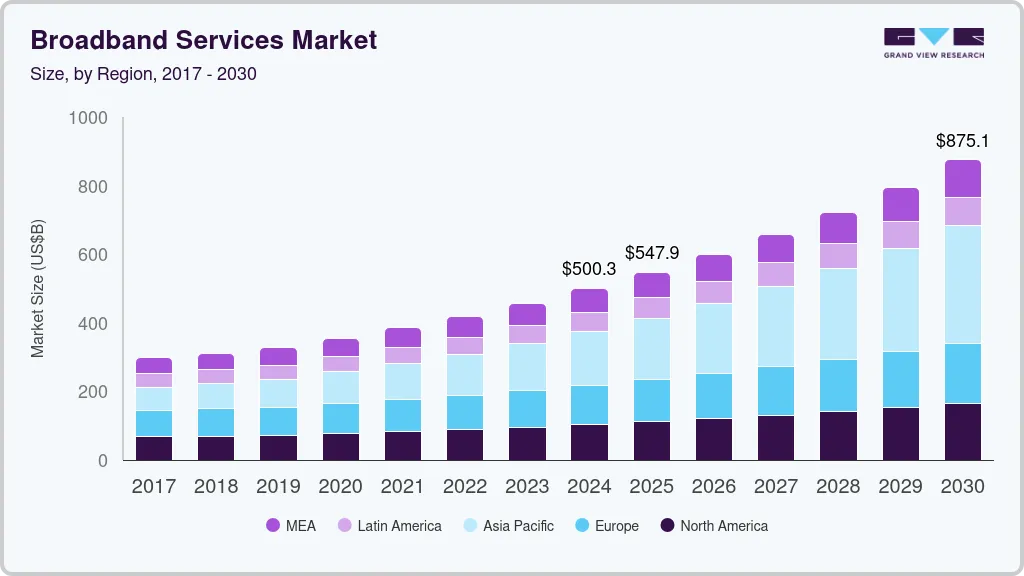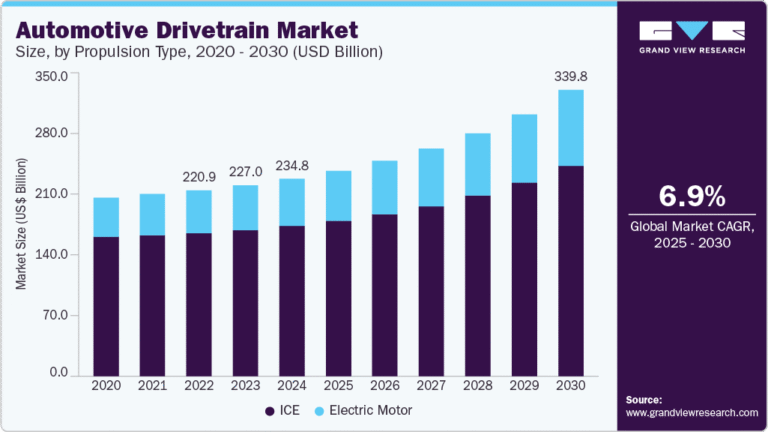Broadband Services Market Size, Share & Trends Analysis growing at a CAGR of 9.8% from 2025 to 2030

The global broadband services market size was estimated at USD 500.30 billion in 2024 and is projected to reach USD 875.06 billion by 2030, growing at a CAGR of 9.8% from 2025 to 2030. Digital transformation of several industry verticals requires broadband services, thereby promoting market growth.
Key Market Trends & Insights
- Asia Pacific broadband services market dominated globally with a revenue share of 31.31% in 2024.
- The U.S. broadband services market is expected to grow at a significant CAGR from 2025 to 2030.
- Based on broadband connection, in terms of revenue, fiber optics segment dominated the market with a share of 36.06% in 2024.
- Based on end-use, in terms of revenue and market share, the business segment captured the largest market share in 2024.
Market Size & Forecast
- 2024 Market Size: USD 500.30 Billion
- 2030 Projected Market Size: USD 875.06 Billion
- CAGR (2025-2030): 9.8%
- Asia Pacific: Largest market in 2024
Request a free sample copy or view report summary: https://www.grandviewresearch.com/industry-analysis/broadband-services-market/request/rs1
For instance, increasing online commerce for retail goods & services, digitalization of hospital records, e-government initiatives, and rapidly rising platforms for media and entertainment content are notably augmenting the market growth. Wireless technology holds immense potential to accelerate the global digital revolution across verticals through productivity enhancements and economic reductions.
According to the Organization for Economic Co-operation and Development (OECD), surge in the number of wireless subscribers has been a major growth driver for the market. Besides digital transformation in businesses, increased adoption of online learning has not only augmented the need for digital education but also reflects a strong requirement for uninterrupted broadband connectivity.
The market continues to expand at a steady pace, driven by the increasing application of broadband in global communication. With the rising trend of global digitalization, governments, businesses, and individuals are increasingly depending on high-speed seamless internet connections for purposes of information, education, interaction, and entertainment.
The broadband services industry is experiencing significant trends that are reshaping the industry landscape. The integration of 5G technology is revolutionizing broadband services by providing higher speeds, lower latency, and more reliable connections, particularly in urban areas where 5G fixed wireless access offers a viable alternative to traditional wired broadband. In addition, the rise of satellite broadband services, led by companies like SpaceX’s Starlink, is expanding high-speed internet access to remote and underserved regions, aiming to bridge the digital divide. Furthermore, service providers are increasingly offering bundled packages that combine internet, television, phone, and even home security systems, enhancing customer value and satisfaction.






